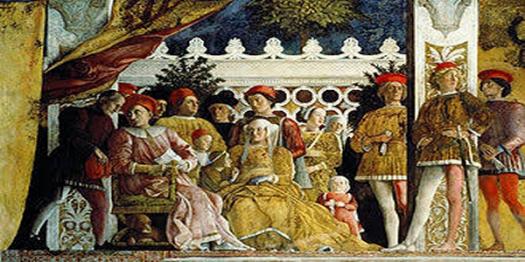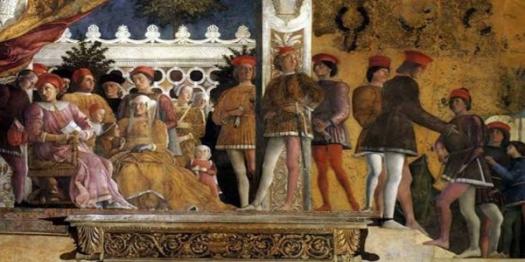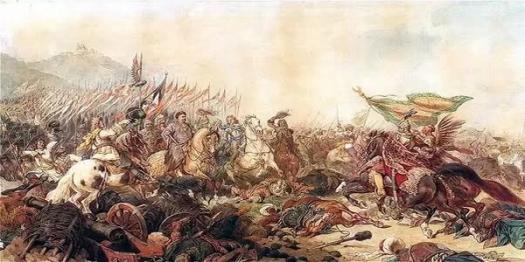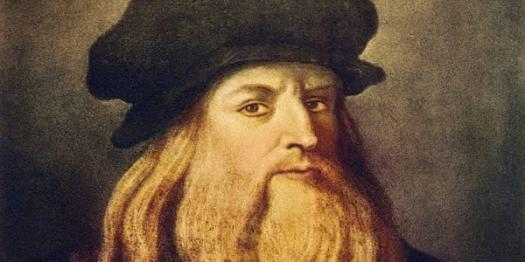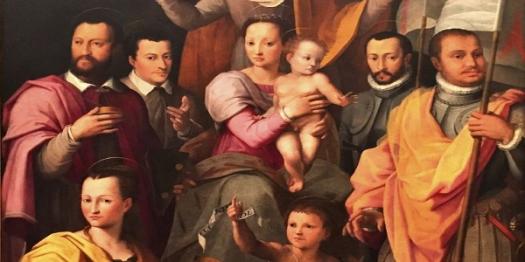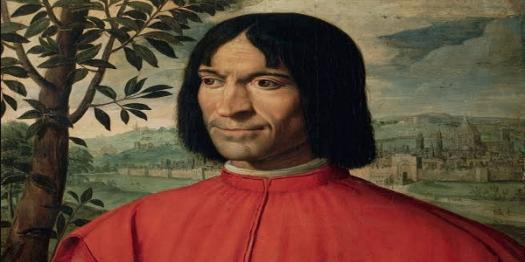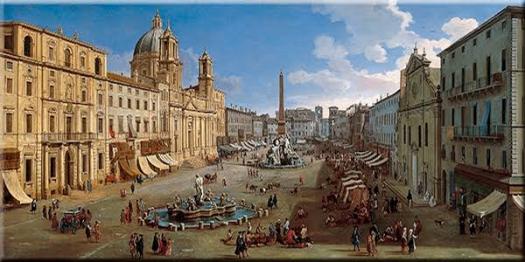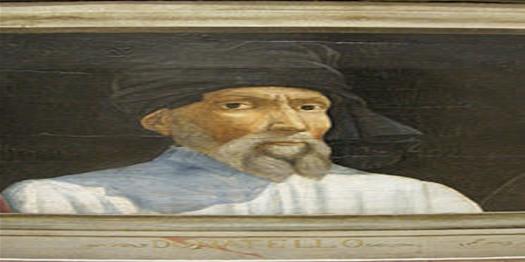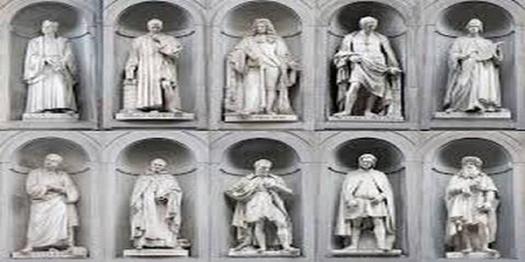Early Renaissance Art History Quiz

Early human societies began to form shortly after Homo Sapiens first appeared. This quiz tests you on the means of livelihood, geographical locations and the time of the existence of the early human societies. Although technologically unsophisticated, these societies developed tools and so you will also find questions on the kind of tools in use during that period.
- 1.
Renaissance is the period immediately following the _____
- A.
Early ages
- B.
Middle ages
- C.
Birth of christ
- D.
Death of christ
Correct Answer
B. Middle agesExplanation
The Renaissance is the period immediately following the Middle Ages. The Middle Ages, also known as the medieval period, lasted from the 5th to the 15th century. It was characterized by feudalism, the dominance of the Catholic Church, and a focus on religious and agricultural life. The Renaissance, on the other hand, was a period of great cultural and intellectual change that emerged in the 14th century and lasted until the 17th century. It was marked by a renewed interest in the arts, sciences, and humanism, and a shift towards secularism and individualism.Rate this question:
-
- 2.
Renaissance art originated in _____
- A.
Italy
- B.
Africa
- C.
Greece
- D.
China
Correct Answer
A. ItalyExplanation
During the Renaissance period, Italy was the birthplace and center of the artistic movement. This era, which spanned from the 14th to the 17th century, saw a revival of interest in classical art and culture. Italian artists such as Leonardo da Vinci, Michelangelo, and Raphael emerged during this time and produced some of the most iconic works of art in history. The city-states of Florence, Rome, and Venice became hubs of artistic innovation, attracting patrons and artists from across Europe. Therefore, Italy is the correct answer as it is widely recognized as the birthplace of Renaissance art.Rate this question:
-
- 3.
The origin of Renaissance art can be traced to the _____
- A.
16th and 17th century
- B.
4th and 5th century
- C.
13th and 14th century
- D.
10th and 11th century
Correct Answer
C. 13th and 14th centuryExplanation
The correct answer is 13th and 14th century. The Renaissance art movement began in Italy during the 14th century and lasted until the 17th century. This period was marked by a revival of interest in classical Greek and Roman art, as well as a focus on humanism and individualism. Artists during this time, such as Leonardo da Vinci and Michelangelo, sought to depict the natural world and human emotions in a realistic and lifelike manner. The 13th and 14th centuries were a crucial time for the development of Renaissance art, as artists began to experiment with new techniques and styles that would later define the movement.Rate this question:
-
- 4.
_____ is known as the ultimate "Renaissance Man"?
- A.
Sandro Botticelli
- B.
Leonardo da Vinci
- C.
Raphel
- D.
Donatello
Correct Answer
B. Leonardo da VinciExplanation
Leonardo da Vinci is known as the ultimate "Renaissance Man" because he excelled in various fields such as painting, sculpture, architecture, engineering, and science. He was not only a highly skilled artist, but also a visionary inventor and a keen observer of the natural world. His famous works like the Mona Lisa and The Last Supper are considered masterpieces of art, while his scientific and engineering drawings demonstrate his curiosity and innovative thinking. Da Vinci's diverse talents and contributions during the Renaissance period make him the epitome of a true Renaissance Man.Rate this question:
-
- 5.
_____ was the major patron of the arts during the Renaissance
- A.
Royalty
- B.
The rich upper class
- C.
The catholic church
- D.
The Italian middle class
Correct Answer
C. The catholic churchExplanation
During the Renaissance, the Catholic Church played a significant role as the major patron of the arts. The church commissioned and funded numerous artworks, including paintings, sculptures, and architecture, to promote religious themes and ideals. Many renowned artists, such as Michelangelo and Leonardo da Vinci, received patronage from the church. The Catholic Church's support for the arts during this period helped to shape and define the artistic achievements of the Renaissance.Rate this question:
-
- 6.
Which of the following merchant family was notable for its commissioning of Renaissance art?
- A.
Medici
- B.
Davinci
- C.
Betto Bardi
- D.
Simoni
Correct Answer
A. MediciExplanation
The Medici family was known for commissioning Renaissance art. They were a wealthy and influential merchant family from Florence, Italy, who played a significant role in the patronage of the arts during the Renaissance period. They supported and sponsored many renowned artists, including Michelangelo, Leonardo da Vinci, and Botticelli, among others. Their patronage not only contributed to the flourishing of art and culture during the Renaissance but also helped establish Florence as a center of artistic excellence.Rate this question:
-
- 7.
Lorenzo da Medici, a strong supporter of Renaissance art was also known as _____
- A.
The Just
- B.
The Magnificent
- C.
The fair one
- D.
The Warrior
Correct Answer
B. The MagnificentExplanation
Lorenzo da Medici, being a strong supporter of Renaissance art, was widely recognized as "The Magnificent" due to his immense contributions and patronage towards the arts. His support helped foster the flourishing of artists and intellectuals during the Renaissance period, making him a significant figure in the art world.Rate this question:
-
- 8.
_____ displaced Florence as the principal center of Renaissance art?
- A.
Ethopia
- B.
Spain
- C.
Greece
- D.
Rome
Correct Answer
D. RomeExplanation
Rome displaced Florence as the principal center of Renaissance art. During the Renaissance, Rome became a hub for artists and intellectuals, attracting patrons and scholars from all over Europe. The city's rich history, ancient ruins, and connection to the Roman Empire made it an ideal place for artists to study and draw inspiration. Additionally, the Catholic Church, which had its headquarters in Rome, was a major patron of the arts during this time, commissioning numerous artworks for churches and palaces. This shift in artistic focus from Florence to Rome marked a significant change in the center of artistic activity during the Renaissance period.Rate this question:
-
- 9.
Which of these great masters did not dominate the period known as the High Renaissance?
- A.
Leonardo da Vinci
- B.
Michelangelo
- C.
Raphel
- D.
Donatello
Correct Answer
D. DonatelloExplanation
Donatello did not dominate the period known as the High Renaissance. While he was a prominent sculptor during the Early Renaissance, the High Renaissance is typically associated with the works of Leonardo da Vinci, Michelangelo, and Raphael. Donatello's contributions to the art world were significant, but he was not considered a dominant figure during the High Renaissance.Rate this question:
-
- 10.
The High Renaissance period lasted from the early 1490's to _____
- A.
1660
- B.
1510
- C.
1500
- D.
1527
Correct Answer
D. 1527Explanation
The High Renaissance period lasted from the early 1490s to 1527. This period in art history is characterized by the works of great artists such as Leonardo da Vinci, Michelangelo, and Raphael. These artists created some of the most iconic and influential artworks of all time, showcasing a mastery of technique, perspective, and human anatomy. The year 1527 marks the end of the High Renaissance, as it is commonly associated with the Sack of Rome, a devastating event that caused a decline in artistic patronage and marked the beginning of the Mannerist period.Rate this question:
-
Quiz Review Timeline +
Our quizzes are rigorously reviewed, monitored and continuously updated by our expert board to maintain accuracy, relevance, and timeliness.
-
Current Version
-
Mar 22, 2023Quiz Edited by
ProProfs Editorial Team -
Mar 15, 2019Quiz Created by
Lynn Bradley
 Back to top
Back to top



